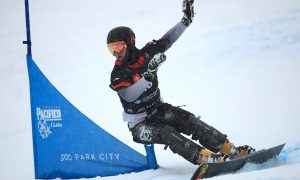Alec Simonson enrolled at dental school in August 2021 with the goal of mastering dental medicine. In his spare time he is an avid pickleball player and enjoys visiting the local courts to play with friends and meet other members of the community. Alec Simonson is also a member of the UF Pickleball Club. This article will look at the soaring popularity of pickleball and why it is such an inclusive and enjoyable sport to play.
The UF Pickleball Club was created to provide students with an outlet to learn more about the sport, irrespective of their experience. It was also launched with the mission of helping to establish connections between the University of Florida’s various colleges. The organization stages a variety of events, workshops, and practices, presenting an opportunity for members to engage with peers from across the campus. In addition, the UF Pickleball Club also hosts and attends intercollegiate and local tournaments.
According to a 2022 Sports & Fitness Industry Association report, in the United States alone there are somewhere in the region of 4.8 million “picklers” as pickleball players are otherwise known. Described as a combination of tennis, badminton, and ping-pong, pickleball is America’s fastest-growing sport today, having grown by almost 40% between 2019 and 2021.
Like a rising tide of pickleball aficionados, San Diego residents Scott and Kristen Miller have become fascinated by the sport – so much so that they have made the drastic decision of filling in their swimming pool to make way for a pickleball court. A college tennis player, Kristen Miller was introduced to the sport by friends. She now plays the game twice weekly and hopes to play even more once construction of their new court is complete.
The USA Pickleball Association reports that, in 2021, approximately half of all serious pickleball players were aged 55 or older. However, the sport is trending downwards, with many more casual players under the age of 44 today and the sport’s fastest growing segment those aged 24 or under.
Experts attribute pickleball’s ability to appeal to players both young and old to a combination of factors. Dr. Ernie Medina Jr serves as assistant professor of public health at Loma Linda University and a pickleball coach. He suggests that while in tennis “balls are all over the place,” in pickleball, the ball is less bouncy and does not fly as fast through the air. The paddle is also much easier to handle than a tennis racket. In addition, pickleball players also serve underhand, making it easier to hit and return.
In addition to being easier to learn than tennis, pickleball has a slower pace, with less ground to cover. A pickleball court is approximately a quarter of the size of a standard tennis court and is usually played in doubles. Research suggests that the sport may be safer than tennis for players with heart issues too.
As with any sport, even in pickleball, players run the risk of injuries such as rotator cuff pain and sprains. To mitigate this, players should complete a warm-up routine before playing, as well as maintaining a wide and ready position stance throughout the match. It is also prudent to wear shoes that are designed for lateral movement and avoid backpedaling to take a shot sailing overhead.
Capable of being played standing or in a wheelchair, outdoors or in, pickleball can be enjoyed in virtually any open space. Dr. Medina even reports that he once set up a pickleball court in a conference venue hallway. Across America today, there are over 38,000 indoor and outdoor pickleball courts, helping to keep the barrier to entry low and ensuring that the sport can be enjoyed by all.





















